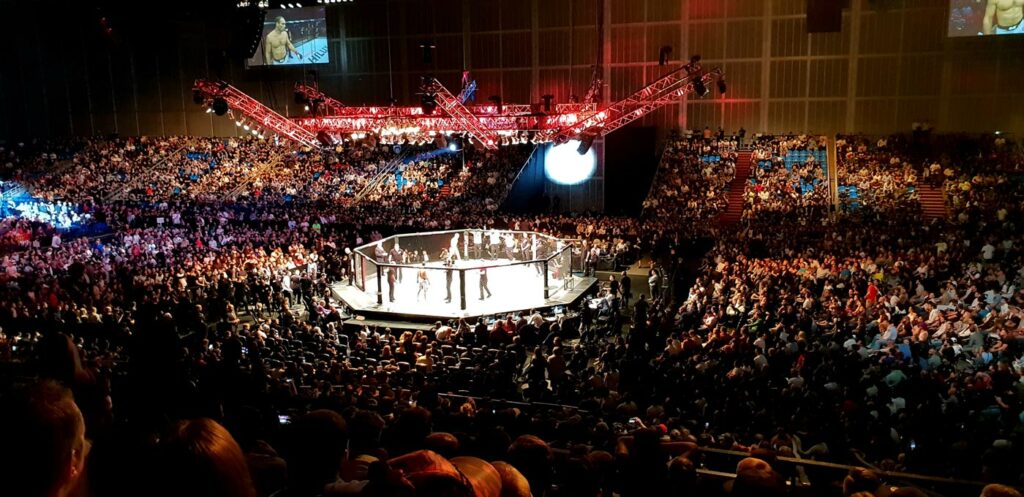Latest Development in the Case
In a twist, the TKO group, the parent company of the Ultimate Fighting Championship (UFC) ‘s parent company, has agreed to a $335 million payment to settle the $1.6 billion lawsuit of 1,200 fighters.
The case started over a decade ago, and the court set the trial for April.
The fighters released a statement expressing satisfaction at the settlement reached on March 13th and promising updates in 45 to 60 days after the terms are filed in court.
The payment, which will be in installments, is expected to be fully tax deductible. By settling, the UFC avoids a costly trial and court orders that could impose directives on its business dealings.
The fighters also sought shorter contract lengths as added terms of the settlement.
Although the TKO Group maintains its innocence, it is glad to have reached a compromise with the fighters.
Highlights of the Case
In August 2023, fighters suing the UFC got a boost after a court ruling granted their request to combine their lawsuits into a class action.
In response, the UFC moved for summary judgment of the case to avoid a trial. Its defense was the increased number of bouts and competitive fighter compensation.
In January 2024, U.S. District Judge Richard F. Boulware rejected this motion, stating that the fighters had provided sufficient evidence of the UFC short-changing its fighters with its market power.
On 13th April 2024, the UFC will reach a milestone, the UFC 300, which features its 300th fight event and 30th anniversary.
Similar in hype to the UFC 280, which featured fighters with ten or more winning streaks, the UFC 300 features champion Pereira defending his belt against Hill, who has never lost a title fight in the octagon.
Despite cage-side rumors of a Conor McGregor card, he’s unexpected to be back in time to fight. UFC president Dana White said, “When Conor is ready to fight, you know we’ll announce it.”
The UFC would have been in court in Nevada two days after the start of UFC 300 to answer for its antitrust business practices.
Origin of the UFC Antitrust lawsuit
Over a decade ago, fighters Cung Le, Nate Quarry, Jon Fitch, Brandon Vera, and other notable names in the UFC filed separate lawsuits accusing the UFC of exploiting its majority power to significantly reduce fighter pay and benefits.
They allege that since 2006, the UFC has purchased its biggest competitors in the mixed martial arts (MMA) market and paid fighters as little as they wish, violating the Sherman Antitrust Act, 15 USC S 2.
Without substantial competition, the UFC operates a monopsony, which exists when a market has only one leading buyer. Today, the UFC allegedly owns nearly 90% of the MMA market.
The aggrieved fighters later compiled their lawsuits into a class action, according to the website they created to provide updates for the public, UFCClassAction:
“These Class Representatives filed the lawsuit not only for themselves but also seek to represent about 1,200 other current and former UFC fighters. One of their goals is to recover money for all 1,200 fighters. Another goal is to force the UFC to change the way it does business.”
The UFC’s Payment Structure for Fighters
Major sporting leagues, like the NBA and NFL, pay players nearly 50% of their profits. In comparison, fighters get just 14% of the UFC’s current profits, less than half of the 40% it paid in the early 2000s.
Meanwhile, fellow MMA organizers Strikeforce paid more than 63% of its earnings, and Bellator paid 45%.
The UFC treats fighters as independent contractors, meaning fighters receive no salary or benefits. They only earn when they fight.
Fighters are also responsible for training, skill maintenance, and health insurance expenses.
The Nature of UFC Fighters’ Contracts
Aside from paying fighters per fight, the UFC still controls players through its rules.
UFC fighters cannot compete in other MMA company events. Their choice of clothes, words, and merchandise gains also depend on the UFC.
For example, Reebok partners with the UFC, and fighters must wear only Reebok apparel during fights. Meanwhile, the UFC gets the sponsorship money and determines the fighters’ cut.
The UFC also blocked the fighters’ attempt at unionizing, citing that they are independent contractors under Federal laws.
The UFC’s Defence
The UFC claimed that its business policies help promote competition. It insisted that the fighters’ contracts help produce better-quality fights. High-quality fights mean more viewers, which results in higher pay for fighters.
What the Fighters Want
According to their lawsuit website, the initial demands of the 1200 fighters have two goals: to get the fighters their money back and to make the UFC change to favorable business practices.
The fighters seek employee rights and benefits while under contract like their counterparts in other sports. They also want the right to unionize.
They want fairer contracts that guarantee a better revenue split and request a standardized code of conduct that protects their interests.
Impact of the Class action on the UFC
For the UFC, victory at the trials wouldn’t have impacted anything significant.
However, if the reverse had been the case, it would have changed many things in MMA. The fighters wanted close to $1.6 billion from the UFC. Demands are tripled in antitrust lawsuits, meaning the damages could have been nearly $5 billion.
The UFC’s contract format would likely have been affected by court orders on contract length and deal exclusivity.
While many uncertainties surround how the settlement will progress, the results could kickstart a revolution in the UFC and the MMA industry.

